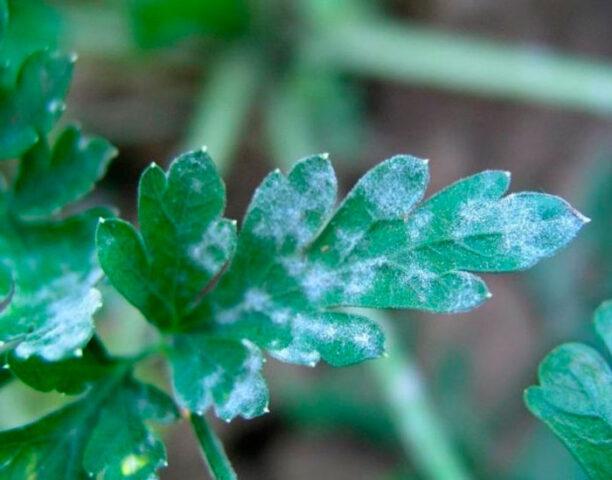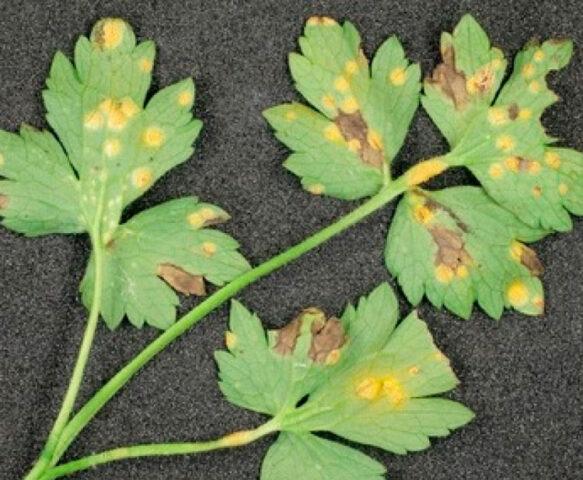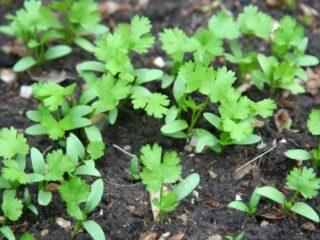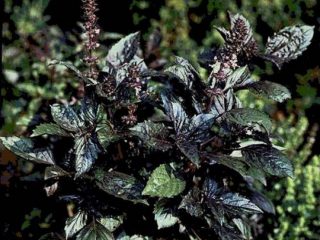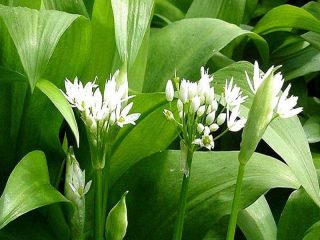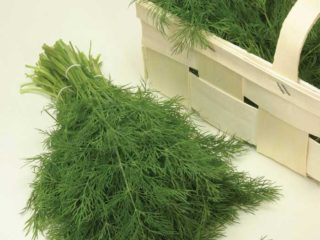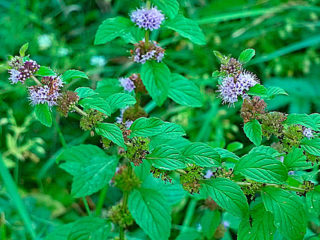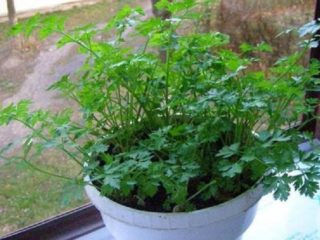Content
Coriander (also known as cilantro) is a very popular spice in oriental cuisine. In cooking, both herbs and plant seeds are used. You can grow a seasoning on your own personal plot - caring for cilantro is simple, it also does not impose specific requirements on the cultivation conditions. But still, there are certain nuances regarding when and how to sow coriander, how to prepare a garden bed and seeds. It is recommended to find out about them in advance, otherwise you can not count on a bountiful harvest.
When to plant coriander
Seeds and shoots of cilantro remain viable at temperatures down to -5 ° C. Therefore, the timing of sowing coriander is quite early: it is necessary for the substrate to warm up to only 6-8 ° C. In a temperate climate, the optimal time is the second decade of April. In the subtropical southern regions, you can plant coriander earlier - as early as mid-March. In the Urals, in Siberia, in the Far East, we will have to wait for the second half of May.
Further, during the season, every 1.5-2 weeks, you can sow a little bit until August. In autumn, cilantro is planted towards the end of October. This is how early greens are obtained. Seedlings when planting cilantro in the fall before winter appear in mid-March.
In a heated greenhouse, coriander is grown year-round. It is planted at intervals of 3-4 weeks. If the gardener allocates space for greenery in an ordinary greenhouse, cilantro is sown there at the very end of February, harvesting at the junction of April-May.
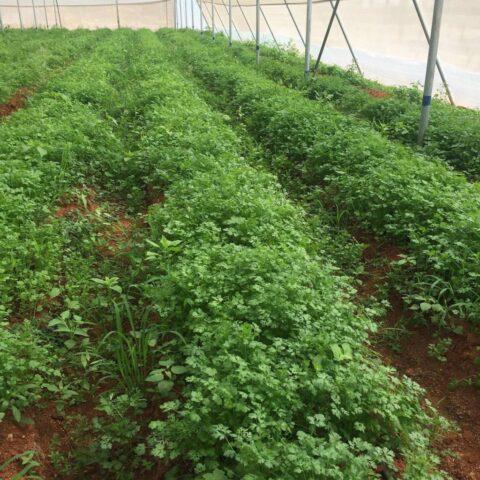
The timing of planting coriander determines the features of the local climate and the conditions for its cultivation.
Best predecessors
Optimal growing conditions for cilantro include proper crop rotation. It is recommended to plant coriander after:
- any legumes (peas, beans, beans);
- cereals (common and green manure);
- all types of onions, garlic;
- corn;
- beets;
- cauliflower and early white cabbage.
Somewhat less successful, but also suitable predecessors for growing cilantro outdoors in the country:
- almost any spicy herbs, green salad;
- melons (pumpkins, melons, watermelons);
- Plants from the Solanaceae family (tomatoes, potatoes, eggplants);
- radish, radish, daikon.
For growing cilantro in the open field on greens and seeds, the areas where they were planted last season are not used:
- umbrella herbs (dill, fennel, parsley, celery, watercress);
- carrot;
- mid- and late-ripening cabbage.
Site selection and soil preparation
The quality and volume of coriander greens directly depends on the choice of a place for the garden. It is recommended to plant it where the plants get enough sunlight and heat. In partial shade, the culture also feels good, but in the dense shade, cilantro develops much more slowly, the yield decreases.
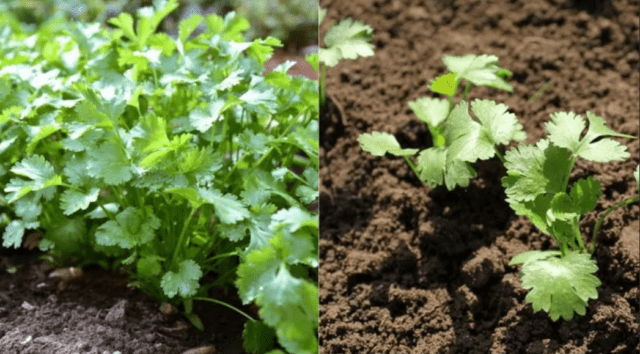
A lack of sunlight leads to a reduced concentration of essential oils in plants
For the bed on which it is planned to plant coriander, choose a flat place or an area closer to the top of a gentle hill. You can not sow cilantro seeds in open ground where moist cold air and rainwater inevitably stagnate. Dampness is not tolerated by either the roots or the aboveground part of the culture.
The plant does not need a very nutritious soil. More important for him is the looseness, water and air permeability of the soil. It is best to plant coriander in sandy loam or loam. Acid-base balance - neutral or slightly alkaline. In an acidic substrate, the culture will definitely not survive.
Since cilantro is planted early, the garden is prepared in the fall. The site is dug up, at the same time removing any debris, humus is introduced (up to 3-5 l / m²) and phosphorus-potassium fertilizer (30-40 g / m²). The latter can be replaced with sifted wood ash (0.5 l / m²). In the spring, just before planting coriander, the soil is thoroughly loosened, watered with a solution of any nitrogen fertilizer.
Seed preparation
It makes sense to plant only coriander seeds collected no later than two years ago. If they are old, you can count on single shoots at best.
To speed up the process of seedling emergence, immediately before planting, it is recommended to soak them in water at room temperature or in a solution of any biostimulant for 10-12 hours.

For planting, only coriander seeds harvested independently or released by agricultural firms are suitable.
How to properly plant cilantro (coriander) in open ground
Growing coriander seedlings with gardeners is unpopular, although, in principle, it is possible. Most often it is planted directly in open ground.
Planting cilantro in open ground with seeds in spring
So that the plants in the garden have enough space, the coriander is planted according to one of the following schemes:
- rows with an interval between plants of 8-10 cm and a row spacing of 12-15 cm;
- in the holes - on the garden bed, as it were, they draw a lattice, dividing it into squares with a side of 12-15 cm, cilantro is planted in the corners of these "cells".
Disembarkation is an extremely simple process:
- Level the soil on the prepared bed, mark holes or grooves up to 2 cm deep.
- Sprinkle them moderately with water at room temperature, wait until it is absorbed.
- Sow coriander as evenly as possible. "Norm" in the presence of grooves on the bed - 2-2.5 g / m². Put 2-3 pieces in each hole.
- Fill the grooves and holes with a thin layer of soil, water again moderately.
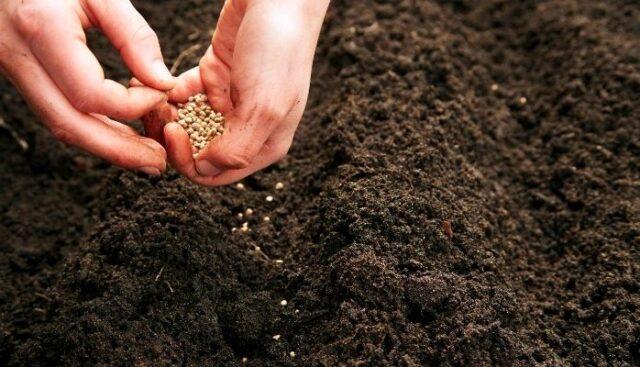
Coriander seeds are large enough to distribute relatively evenly when planting.
Sowing cilantro (coriander) in the fall before winter in open ground
Sowing coriander before winter in those regions where there is no frost below - 10-15 ° C, is carried out according to the same algorithm as in the spring. "Insulate" the bed, throwing it with spruce branches or tightening it with 2-3 layers of covering material.
When enough snow falls, it is thrown onto the cilantro plantings before winter with seeds over the shelter, creating a snowdrift up to 30 cm high.It must be periodically renewed, while breaking the crust on the surface.
Features of growing cilantro in a greenhouse
No specific cilantro care is required if it is planned to grow in a greenhouse. The only difference is earlier planting dates and accelerated rates of crop ripening.
You also need to follow the planting scheme - in favorable conditions, cilantro actively grows. Greens can be cut off within 40-55 days after germination, it depends on the variety.
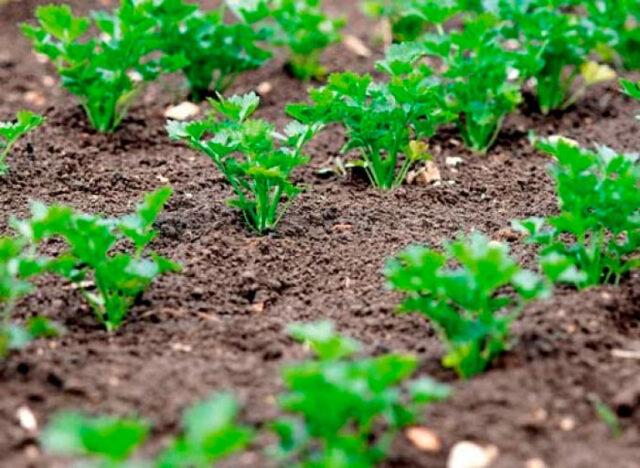
"Crowding" in the greenhouse is more dangerous than in the open field - the risk of developing diseases is higher
Outdoor care for cilantro (coriander)
To grow cilantro from seeds in the garden, you need to remember the main rule.Care for coriander is about the same as for more popular spicy herbs - parsley, dill.
Thinning of sprouts
Coriander seedlings are thinned out in the second true leaf phase. A minimum of 5-7 cm is left between the seedlings. Only in such conditions will cilantro, which is planted on greens, form lush bushes with large juicy leaves. With "crowding" in the garden bed, the greens noticeably turn pale, the leaves lose their tone, exude.

Thinning of seedlings when planting in open ground replaces the picking of seedlings when growing seedlings
Also, seedlings must be weeded. Weeds greatly weaken young plants. Adult cilantro practically does not need weeding, it is able to "hammer" and "displace" most of the "competitors" from the garden.
Watering and loosening
Coriander cannot be called a very moisture-loving plant, but during the active build-up of greenery, it requires regular watering. The substrate is kept moderately moist at all times. Watering intervals are adjusted depending on the weather outside.
When not too hot, the coriander is watered every 3-4 days, consuming about 4-5 l / m². If cilantro is planted on seeds, about a month before they ripen, the rate is reduced to 2-2.5 l / m². This stimulates the formation of peduncles.
Top dressing
All the necessary fertilizers for growing coriander from seeds in the open field are applied in autumn and spring when preparing the beds on which they are planted. Therefore, in favorable conditions, he does not need additional feeding during the growing season.
But if the substrate is very “poor” or “light”, depleted, every 2.5-3 weeks the coriander is fed by watering with nutrient solutions. They use both purchased fertilizers for herbs and natural organic matter - infusions of cow dung, poultry droppings, "green tea" from weeds.
Protection against diseases and pests
The immunity of coriander is generally good, regardless of whether it is planted in a greenhouse or in open ground. But there are several fungal diseases to which the culture is susceptible:
- powdery mildew - a grayish-white powdery coating on all parts of the plant;
Powdery mildew is a disease that affects the vast majority of horticultural crops
- ramulariasis - brown spots on the leaves, quickly drying plants.
If nothing is done, the cilantro bush affected by ramulariosis will completely dry out in 7-10 days.
To avoid the development of pathogenic microflora, coriander, which is planted in the garden, is regularly examined. At the first suspicious symptoms of planting and the soil in the garden is sprayed with a solution of any fungicide of biological origin.
Due to its high content of essential oils, coriander is inedible for most pests. The exception is the umbrella and striped bug. But this insect cannot be called very common; to prevent its attacks, it is enough to dust the plants and soil with a mixture of sifted wood ash and tobacco dust once every 2-3 weeks.

Umbrella and striped bugs are brightly colored, so it is not difficult to spot them on plants
Harvesting and storage
From coriander (it does not matter if it is planted in the open ground or in a greenhouse), greens are harvested several times during the season, waiting for the appearance of new leaves. Cutting is stopped after the formation of peduncles - they become noticeably rougher, unpleasantly bitter.
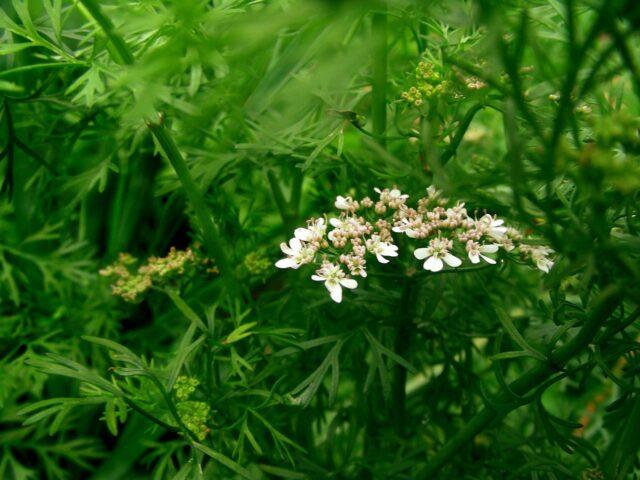
Plants that have begun to bloom are only suitable for collecting seeds
For long-term storage, coriander greens are dried naturally or in the oven, microwave, or electric dryer. Keep it in a cool dark place, in linen or paper bags, hermetically sealed plastic containers.
When coriander is planted on seeds, you need to wait until they are fully ripe. This can be identified by the brownish-brown hue of the shell and the characteristic odor typical of store spice.In unripe seeds, the "aroma" is very unpleasant, for many it causes associations with bedbugs.
First, they are dried out in natural conditions, by uprooting the plants and spreading them out in an open place, well-blown by the wind. You need to wait until they will freely crumble from the peduncles. Then it is separated from plant debris and poured into small paper bags. They are stored in the same place as dry greens.

Seeds and dry coriander greens should be kept away from any food that absorbs foreign odors.
Conclusion
You can sow coriander both outdoors and in a greenhouse. The unpretentious plant adapts to a wide range of climatic and weather conditions. But to get a harvest of greens and seeds, it is necessary to choose the right planting time and place, prepare a garden bed. Planting coriander is not difficult, agricultural technology includes only standard measures: you do not need to be an experienced gardener to care for a crop.
